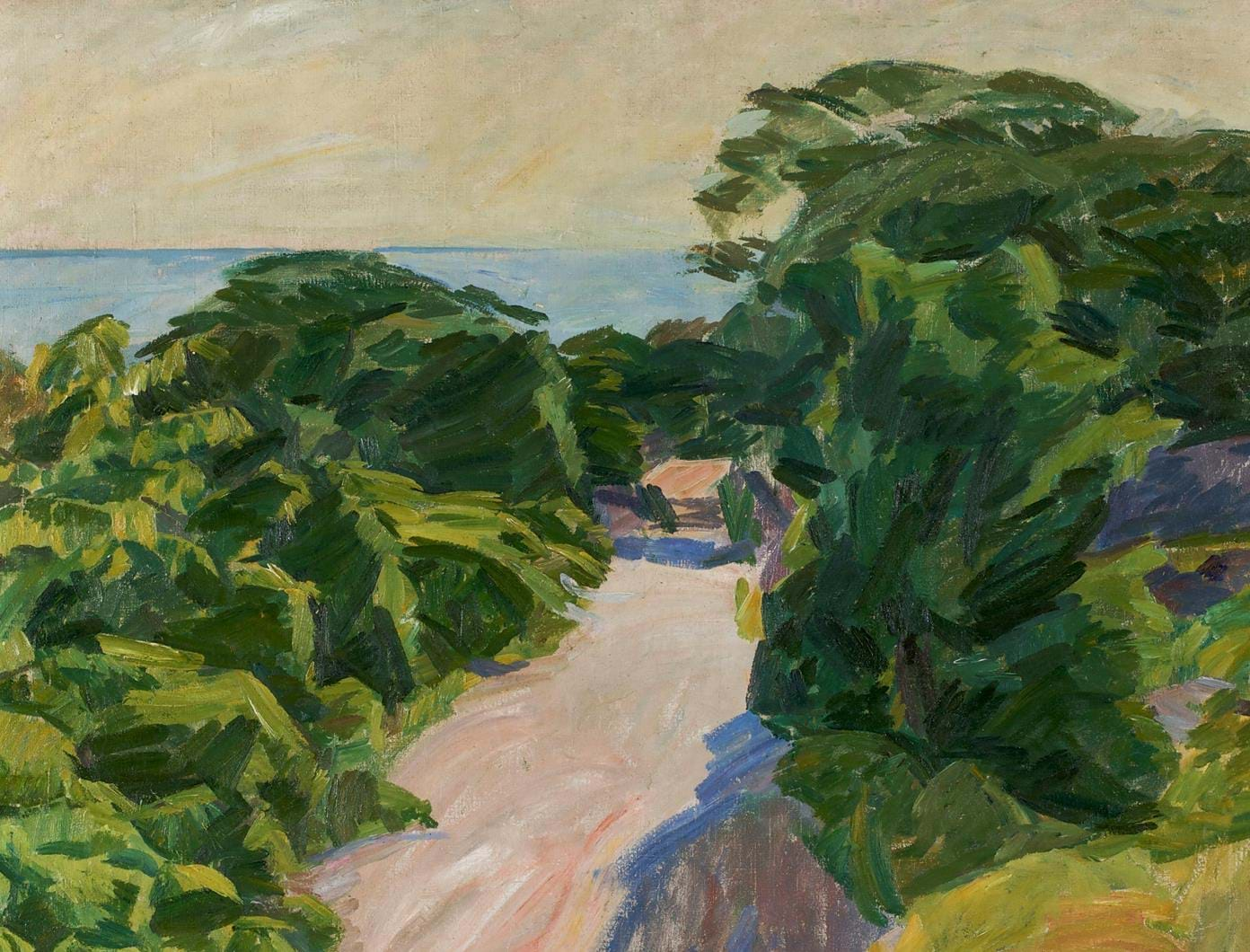
BORNHOLM SCHOOL OF PAINTERS
In the period 1910-1930 the painters Karl Isakson (1878-1922), Edvard Weie (1879-1943), Oluf Høst (1884-1966), Olaf Rude (1886-1957), Kræsten Iversen (1886-1955) and Niels Lergaard (1893-1982) were the prominent artists on Bornholm and Christiansø.
The group established the so-called 'Bornholm School of painters'. It was impossible to describe the school by a uniform artistic expression it was rather seen as an artistic community.
The community grew out of friendships from Kristian Zahrtmann's painting school, where most of the group had been studying together.
FRENCH INSPIRATION
The Bornholm painters influenced the entire Danish art scene. They were the first in Denmark to introduce the new modern European tendencies in painting.
They particularly cultivated the new French art and its experiments with color, abstraction, and cubism.
Especially Cézanne, Matisse and Picasso's new painting techniques made a great impact on the Danish artists.
To think of a picture as an independent reality is an idea that originated in France. The most important feature was the coloristic and technically liberated way of painting, which gave lines, surfaces and colors their own language and musicality.
Thus, the landscape became the preferred motif as it was a good starting point for experimenting with colors.
Based on the incorporation of the new modern features in the Danish painters' representations of Bornholm's landscape, a new Nordic landscape tradition was created.
A tradition that has had great importance in later art in Denmark.

